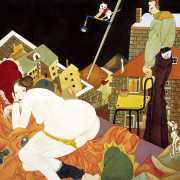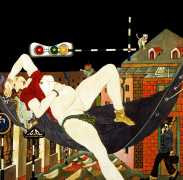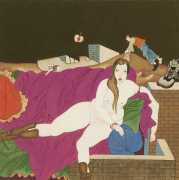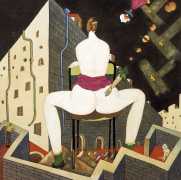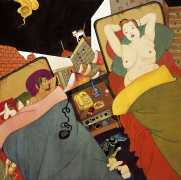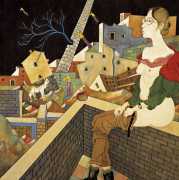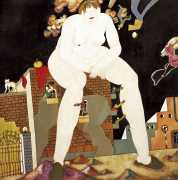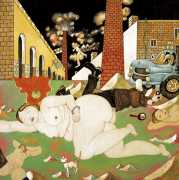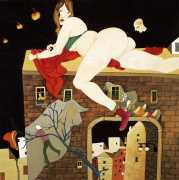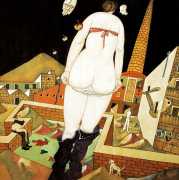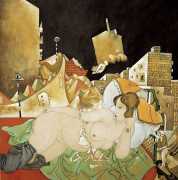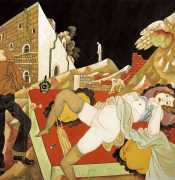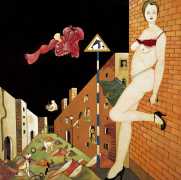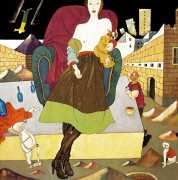In 2009 Li Xiaoxuan created a series of western-style paintings titled ‘Eden’. He used the Chinese transcription of the word Eden, i-dian (伊甸园), making it clear that he is talking exclusively about the Western model of paradise, and not its Buddhist–Taoist form. The perception of a western paradise by an artist with a Chinese consciousness is not particularly favourable, the very choice of the word speaking of geocentrism, traditional for the Chinese, where the Celestial Empire is placed at the centre of creation and the rest of the world is perceived through the prism of criticism.
Li Xiaoxuan created a cycle of fourteen paintings which, given that numbers with fours are unlucky in Chinese numerology, clearly draws parallels between Eden and a version of hell. For the Chinese mind to imagine Eden and hell on Earth, in one place, means not to make a distinction between them. In this series of paintings the expulsion of Adam and Eve from Paradise is something of a farce. Fig leaves are discarded, the naked woman no longer seduces a man, apples from the tree of knowledge are not in demand, and the material world continues without taking too much notice of the central female character, however seductive she might be. The world seems as sterile as before the fall, love is just naked female flesh, and the diversity of the living world is reduced to an urban jungle.
In the Eden portfolio we see a rare interpretation of the western erotic tradition seen through the critical eyes of an eastern artist.


